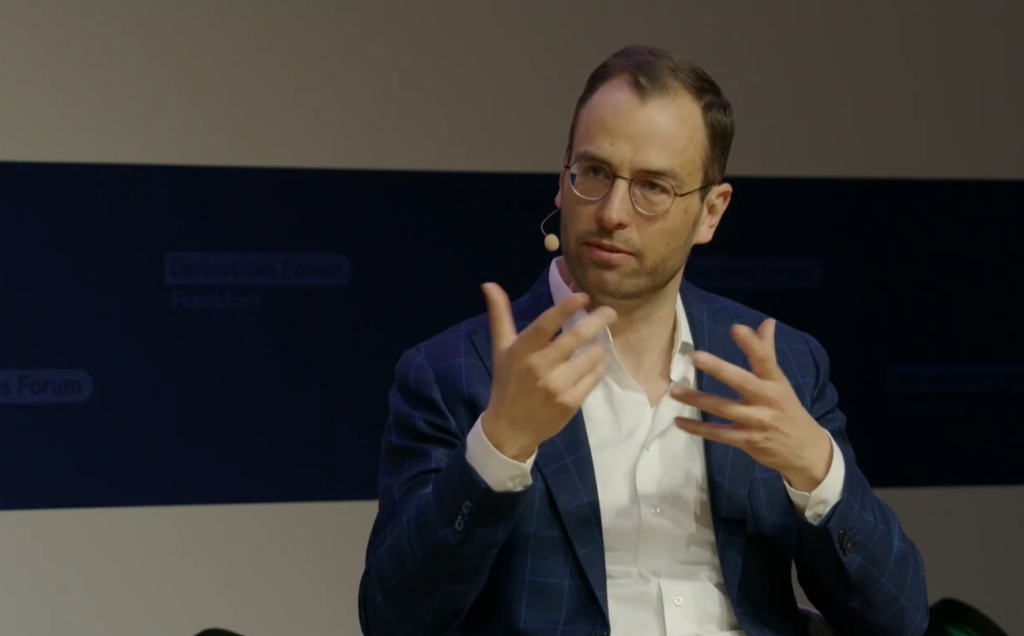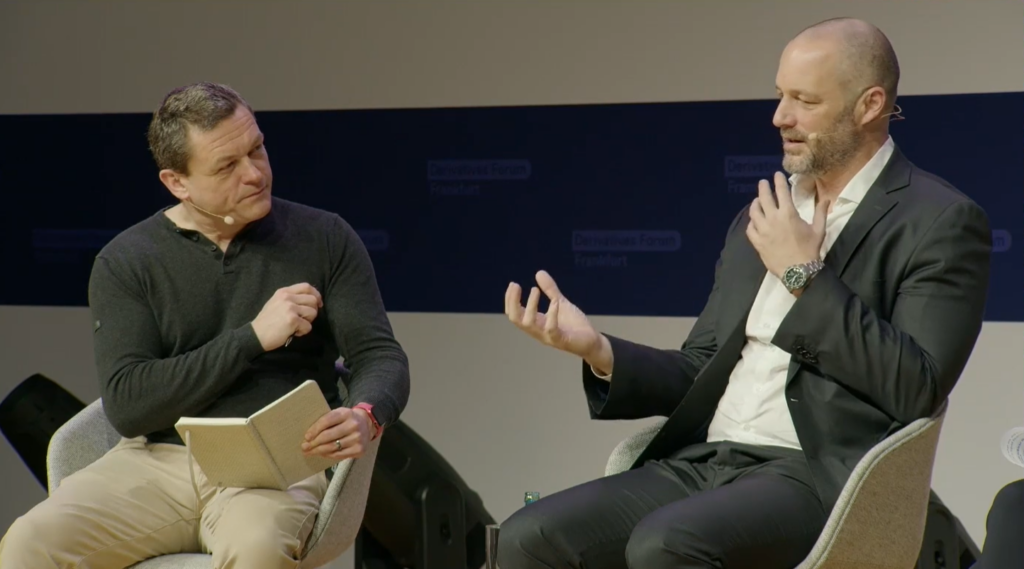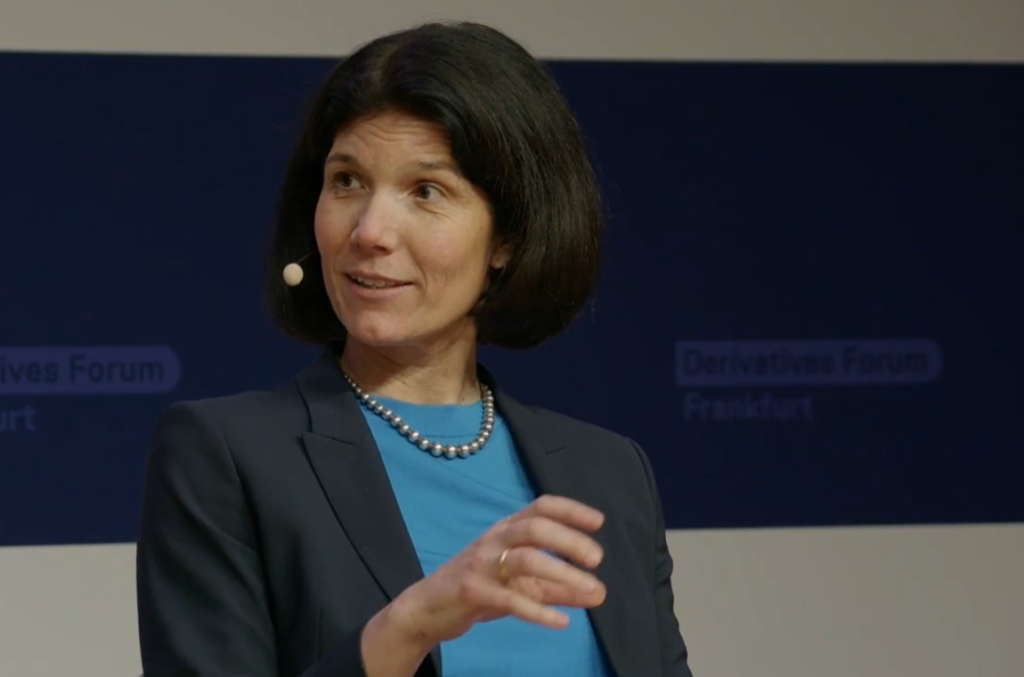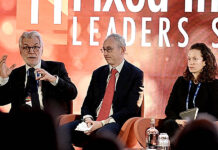One of the primary reasons for the adoption of multi-asset trading is to improve efficiency, agreed ‘Trends in Multi-asset Trading’ panellists at this year’s Derivatives Forum in Frankfurt, last month, hosted by Eurex.

There is now “a layer where you talk about workflow and automation rather than the instrument itself”, explained Werner Eppacher, global head of trading at DWS. While differences between asset execution models require varied approaches, taking a more agnostic approach and acknowledging that workflows across classes tend to be “very similar” creates a “unity” between them, he said, enabling greater efficiency.

Tobias Windecker, director and European head of derivatives trading at Allianz Global Investors agreed that a unified approach to execution is beneficial. Also considering changes to the industry over recent years, he noted that traders are increasingly focused on project work and compliance-related tasks rather than their work at the desk. “The trader can only be a part of the investment process if they have enough time,” he said; this has led [company] to invest in technology that allows the traders to focus on value-adding tasks that require their specialised knowledge and experience.
Tasks that are not value-add “should be automated”, affirmed Eppacher. However, while technology is key “it’s important to have a good trader who really knows their asset class”, added Valerie Noël, head of trading at Syz Group. “That’s the extra mile for the client or PM.” She emphasised the value of a trader’s work amid technological innovation, a sentiment echoed by Windecker, who stated that “there will always be a percentage of trades that you cannot automate”. Beyond the trades themselves, he went on to say that ensuring automation models remain as efficient as possible will require consistent maintenance—human intervention.
Technology will clearly be vital to a multi-asset approach, but panellists were quick to remind the audience of the importance of traders’ skill sets as firms expand their capabilities. Alongside the development of electronic trading—”probably the most important thing, currently”—“you need to diversify the people who work with you,” Noël commented.
She stressed the importance of IT skills, coding capabilities and passion for the job, with Windecker adding that traders now need regulatory knowledge and technology skills, whether that’s coding, machine learning or IT. Traditional trading skills need to be combined with in-depth knowledge and coding know-how in order to deliver their current capabilities and prepare for the future, he said.
The panellists all agreed that teams and trading desks working alongside one another and sharing ideas and insights can be deeply beneficial for firms. Different teams see different parts of market activity, Windecker said. Combining these perspectives creates a better overall understanding for traders, and enables more productive conversations with clients.
Currently, Allianz Global Investor is trading “every asset class” under its multi-asset strategy, Windecker reported. Credit rates, equity, FX and volatility are all in play, as are both exchange-traded and OTC derivatives. Eppacher, as a global trading desk, provides similar coverage, trading all liquid asset classes including listed and OTC derivatives.
For Noël’s part, three main groups of assets are covered, each handled by a different team. ETFs, ETD and crypto form the first category, FI and structured products the second and FX-related assets the third.

“From a sell side, you will not see the development of a pure multi-asset desk in the near future,” affirmed Katrin Petersen, head of distribution for Germany at Barclays. This is due to the amount of products covered along with the risk management and material risk taking required, she expanded.
When supporting clients without having a multi-asset desk in play, it’s important to have market structure development connectivity, she said. The firm speaks with clients about each asset class’s execution modality, she explained, emphasising the benefits of transparency throughout the process. “Our business is naturally cross-asset”, she added, considering client demands in order to mobilise its internal silos and fulfil requirements.
Considering the ‘endgame’ for multi-asset trading, Noël stated that she expects to see traditional assets considered alongside new classes. “Digital assets are a class that must be considered in the future,” she affirmed, adding that there are currently a lot of inefficiencies in their trading process.
“We’ve come a long way, and seen constant developments of the different stages of the multi asset desk,” commented Petersen. The approach “has the ability to unlock potential and create synergies in developing investment processes and systems and improve efficiency”, she added, with the ‘endgame’ improved agility, efficiency and diversification.
Windecker and Eppacher believe that there is no ‘endgame’ to be found. “The challenges have already shifted and are shifting further,” Eppacher observed, expecting to see risk management practices require change as a result of emerging technology.
“We need to constantly challenge ourselves and organisations on how we work on a daily basis and how we will work tomorrow,” added Windecker. “What knows what we will see in 10 years.”
©Markets Media Europe 2024
©Markets Media Europe 2025












